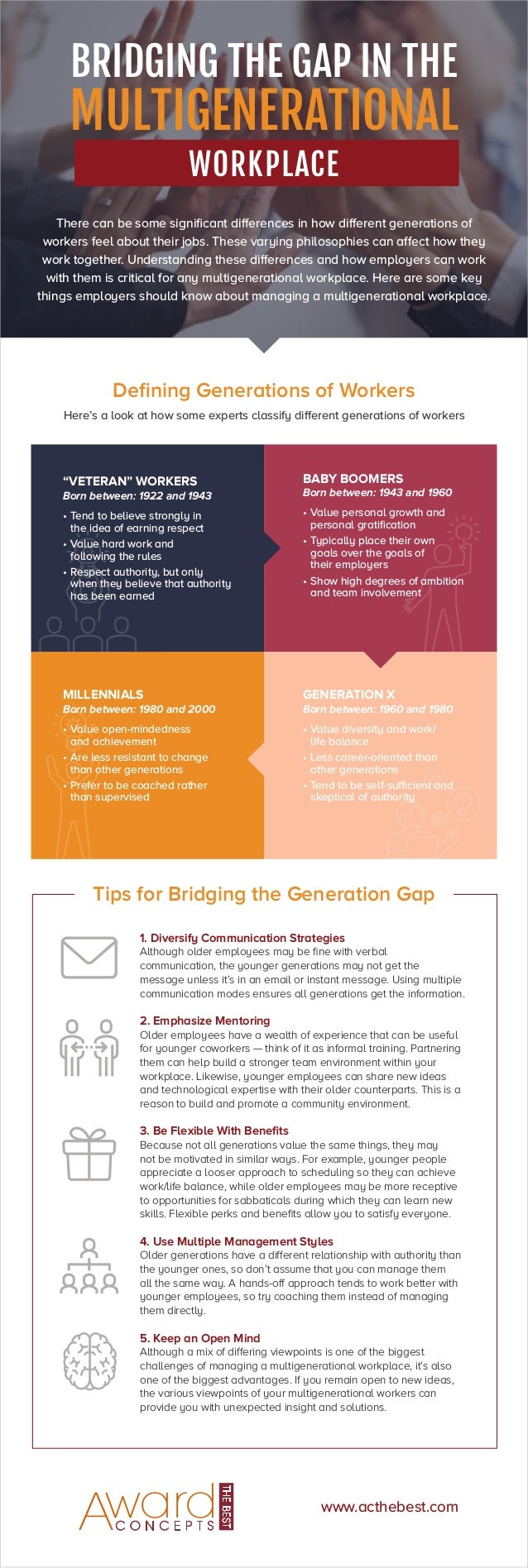Your employees are a diversified group. Each one of them brings unique experiences and viewpoints to the workplace each day. One of the most significant factors that can influence how your employees work together is their age differences. Odds are, your workplace features a mix of older and younger coworkers who must work together to achieve the same organizational goals. A 25-year-old may need to work closely with a 55-year-old. In some cases, though certainly not all, their generational differences could be a source of friction.
It’s important for employers to understand how the multiple generations of workers behave and interact in the workplace. For example, Baby Boomers tend to be more invested in their own personal growth than the generation before them, while Generation X is much more likely to see their work as “just a job.” Getting employees with all of these varying philosophies to work together can be a challenge, but managers and employers who understand the differences — as well as how to work with them — will end up with a much stronger workplace. The accompanying guide contains some of the most important things you should know about each of the four main generational groups you may have in your workplace. It also includes some strategies you can use to help them all work together.
Infographic created by Award Concepts
About the Author
Ken Jeanis is an outsourced HR consultant for Award Concepts, a leading provider of successful employee engagement programs and products. He has over 20 years of experience in the industry and currently lives in Costa Rica where he teaches at Academia Europea.





